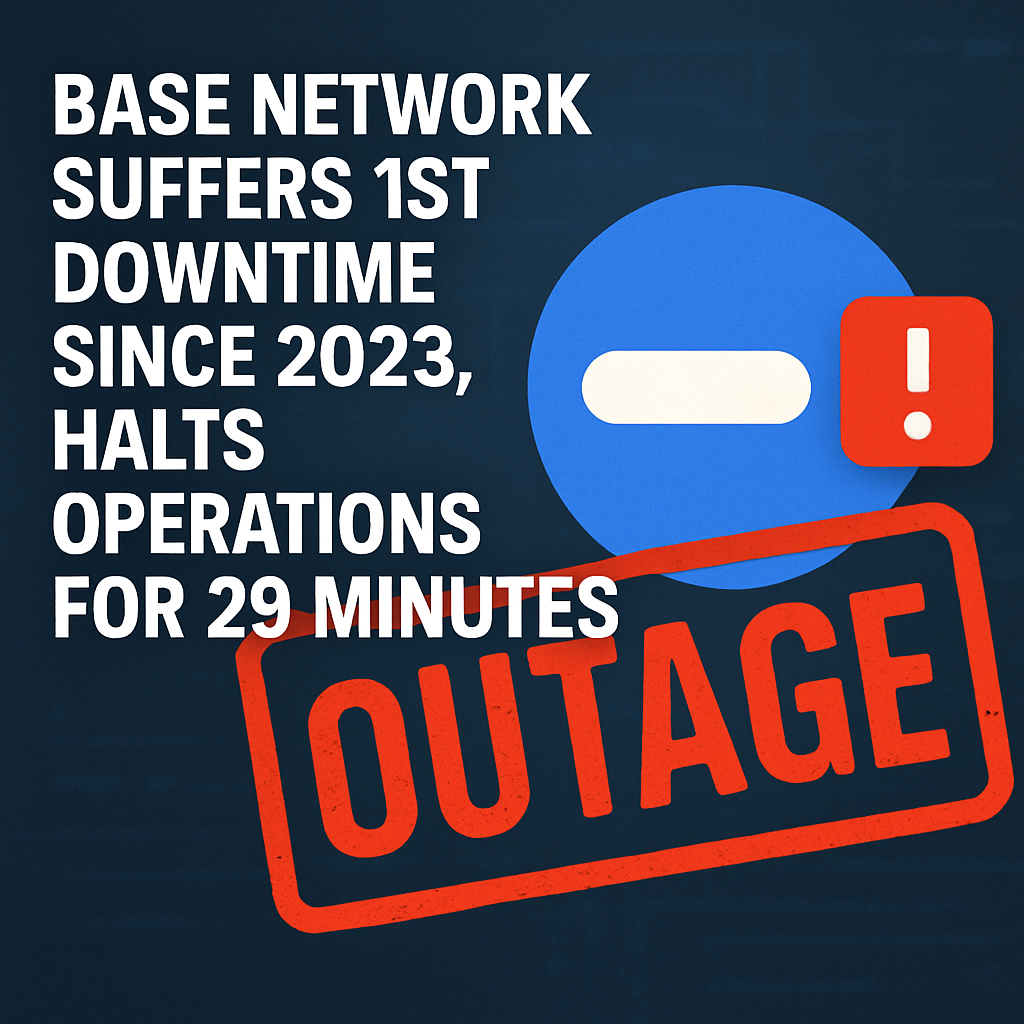Incident Overview
On August 5, 2025, at 06:15 UTC, Coinbase’s Base network suffered its first downtime since launch in 2023. The layer-2 Ethereum scaling solution experienced an “unsafe head delay” that halted block production and core functions, including deposits, withdrawals and Flashblock services. Monitoring platforms flagged the delay when block height remained static at 33,792,704.
Response Timeline
The Base development team initiated investigation at 06:43 UTC, identifying the root cause within one minute. By 06:44 UTC, a fix was deployed and block production resumed. Coinbase’s official status page confirmed restoration of normal operations, and no user funds were reported at risk during the disruption.
Technical Root Cause
The outage stemmed from a synchronization fault in the network’s block confirmation protocol. Automated monitoring tools detected a delay in the network head, prompting engineered interventions. The team implemented timestamp alignment checks and memory cache refreshes to prevent recurrence.
Network Impact
With total value locked exceeding $4.2 billion, including $1.5 billion on Morpho Lending, the outage highlighted potential vulnerabilities in high-throughput layer-2 systems. Users experienced temporary disruptions in transaction processing, though queued transactions were processed rapidly after recovery.
Broader Implications
The incident underscores the operational complexity of optimistic rollup architectures. As layer-2 platforms handle increasing transaction volumes, robust monitoring and rapid response capabilities are essential. The outage may prompt network developers to enhance redundancy and advance automated diagnostics.
Previous Outage History
Prior to this event, Base’s only major downtime occurred in September 2023, when block production stalled for 45 minutes. Lessons learned from that incident contributed to procedural improvements and incident response protocols in place during the recent outage.
Future Enhancements
Post-incident reviews will focus on strengthening real-time synchronization checks, expanding independent monitoring nodes and refining failover mechanisms. Enhanced tooling may include automated rollback capabilities and predictive anomaly detection to mitigate the impact of similar faults.
Conclusion
The Base network’s rapid incident resolution demonstrated effective operational preparedness. Continued upgrades to resilience and increased transparency in incident reporting are expected to bolster user confidence. As demand for layer-2 solutions grows, maintaining near-zero downtime will remain a critical objective.

Comments (0)